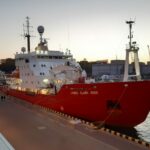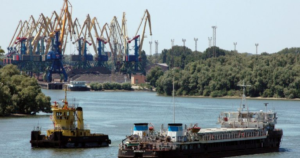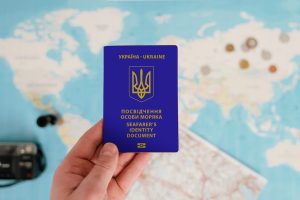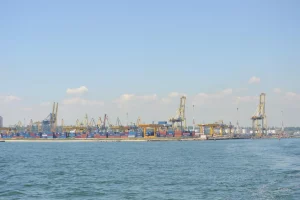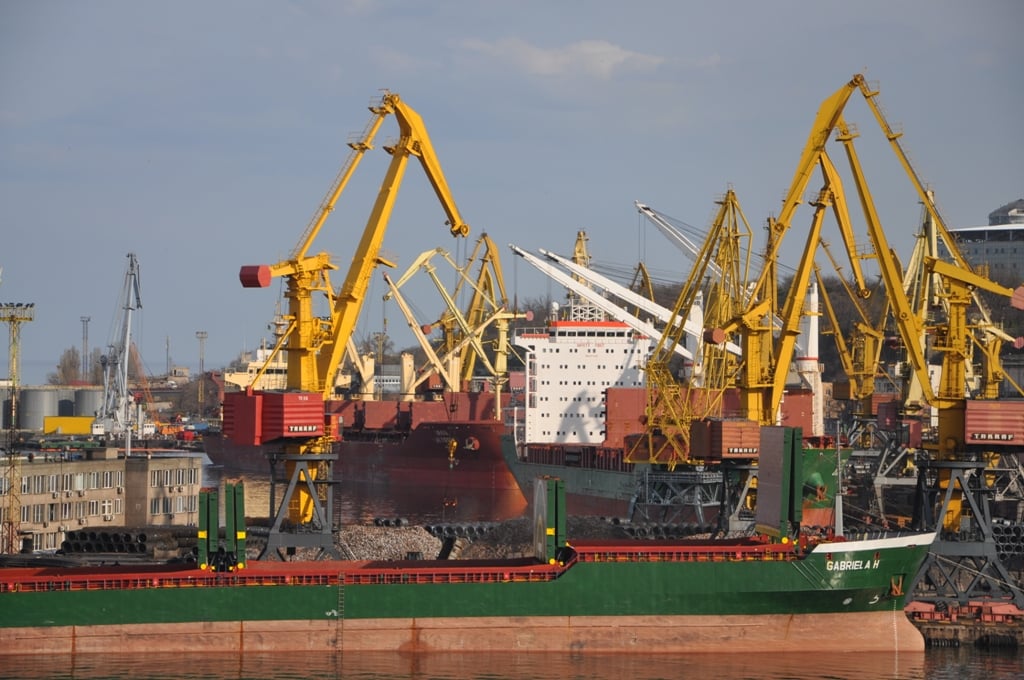“Noosphere” of corruption: who privatized the Ukrainian icebreaker
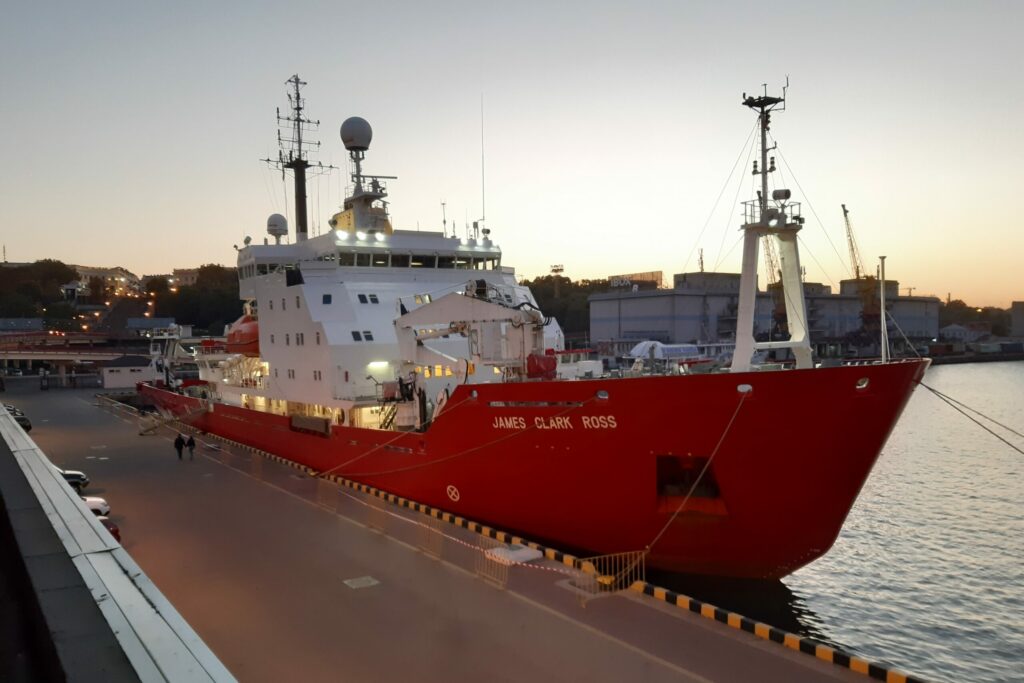
The first departure of the research icebreaker Noosfera to Antarctica under the Ukrainian flag is scheduled for next week, tentatively – January 20th-23rd.
The voyage could have started earlier, but was postponed. Formally, as reported by the press service of the National Antarctic Scientific Center of Ukraine (NASC), due to the fact that on New Year’s holidays there was a delay in the delivery of goods to the icebreaker for a new shift of polar explorers, who should go on the Noosfera to the Ukrainian Antarctic station Akademik Vernadsky.
But this explanation of the NASC is nothing more than an excuse. And confirmation of this is the tender announcement posted both on the website of the Antarctic Center and in the Prozorro public procurement system.
According to this announcement, NASC is ready to pay 6 million 258 thousand dollars of state budget funds for a certain “comprehensive service for the logistics of Ukrainian Antarctic expeditions.”
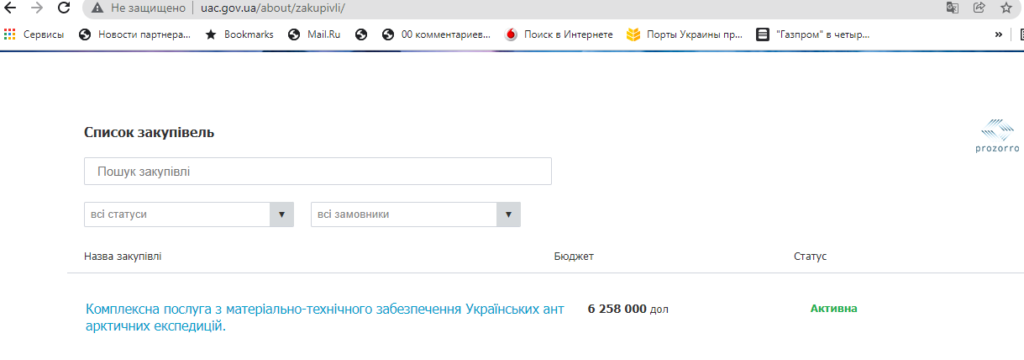
This annonce appeared on the evening of January 6th, when people had already begun to celebrate Christmas, or simply went about their business on the eve of a long weekend. Perhaps for the same reason, the tender announcement eluded the press. But it is worth paying close attention to.
To begin with, let’s go back to the recent past and remember why Ukraine, represented by the NASC, bought the Noosfera icebreaker. Recall that it previously belonged to the UK and was called James Clark Ross. The British asked for $10 million for the vessel, but then agreed to sell it at half price. As a result, $5 million was paid from the state budget, and the icebreaker was handed over to the NASC.
The main argument: expeditions to Antarctica had to be delivered on chartered foreign vessels, and this is expensive and logistically difficult. Allegedly, it is almost impossible to calculate the freight amount in advance (and find a way to reduce it). Ukraine has not had its own vessel for Antarctic expeditions for a long time.
“Bracket” for the charter of the vessel – from 20-25 thousand dollars for vessel/day to 55 thousand. And how many vessel/days will be required – no two years alike. It all depends on weather conditions, and on the time of loading products on board. And we pay,” said Evhen Dykyy, Head of the National Antarctic Scientific Center (NASC), back in 2019.
When the icebreaker was finally bought, it became necessary to deliver it to Ukraine. The icebreaker that had already become “ours” was in Denmark, and it was to move to a new home port – Odesa. This is where things get interesting.
A crew that could ferry the vessel to Odesa was needed. There are tens of thousands of sailors in Ukraine, and it seemed that there was no personnel issue at all. But for some reason (we will deal with this point separately) the NASC did not find qualified navigators and mechanics for this voyage.
The crew was to include 24 people. Even before the purchase of the icebreaker by Ukraine, they were hired by the British crewing company Seamariner. However, after the deal, it said that the experienced sailors of the James Clark Ross icebreaker were already working for two employers. Some went to the crew of the Sir David Attenborough icebreaker of the British Antarctic Survey, while the rest worked for Pech OU from Estonia. In this regard, the NASC reported that this particular Estonian company is the only one that can provide the vessel’s passage to Odesa. With her, a corresponding contract was concluded in the amount of 1.33 million dollars.
The icebreaker left Denmark on September 18th, and moored at the Odesa Sea Port on October 5th, 2021. In other words, the voyage lasted 18 days. Divide the indicated amount by the number of days and we understand that the transfer of the vessel cost the budget $73,888/day. Recall that earlier Evhen Dykyy called the maximum amount of a foreign vessel charter for the delivery of polar explorers to Antarctica – 55 thousand dollars/day. It means, Noosfera even at the initial stage began to cost Ukraine more. This is taking into account the fact that the voyage from Denmark took place under normal shipping conditions, and not in the difficult Antarctic region.
Estonian legacy
There is a question that so far seems to be rhetorical. How did it happen that some of the sailors from the British team were employed by an Estonian company?
Pech OU, which, according to Estonian registries, is engaged in “wholesale trade in intermediate products” (it should be understood that semi-finished products), has been registered in Tallinn since 2011, and is doing well in trade.

Authorized persons in this company are certain Vlolodymyr Tsvetsikh and Natalia Zynkevych. These names are associated with several other Estonian companies, both active and liquidated. But none of them, judging by official data, has anything to do with shipping, crewing or ship supply. But this fact does not bother the NASC, and the center pays a million dollars for the delivery of the icebreaker to Ukraine. The vessel, certainly, was delivered, but the choice of the contractor is more than strange.
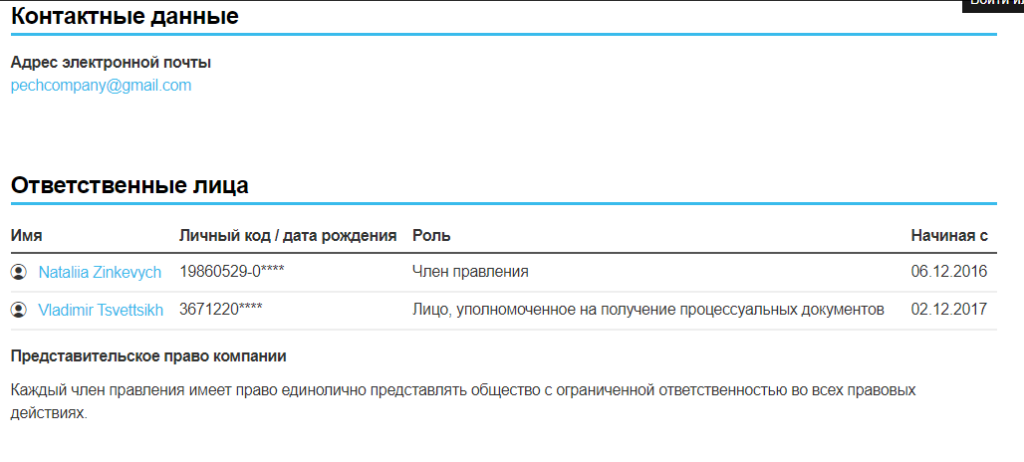
Delivering a vessel to Odesa is not enough. There was a need to prepare her for a voyage to Antarctica. And the icebreaker was sent to the Illichivsk Shipyard for maintenance. It was not possible to find any mention of the contract concluded with the plant either on the NASC website or in the Prozorro system. But there is comprehensive information about the contract with the same trading company from Estonia. It was with it that the NASC agreed on the preparation of the Noosfera for a voyage to Antarctica. The issue price is another 1 million 60 thousand dollars. The relevant contract is here.
It also provides that the contractor will perform maintenance of the icebreaker at the docks of the Illichivsk Shipyard.

Part of the sum ($865,650) will be used to maintain the icebreaker and train the crew, and the rest will be used to equip the vessel with additional, including scientific, equipment. The contractor undertook to complete the first part of the contract by January 15th, 2022, and the second part – retrofitting – by March 10th, 2022. That is, after the Noosfera sets off on a voyage and, most likely, even reaches Antarctica, the path to which should take 5-6 weeks. How the equipment will be delivered there is not mentioned in the contract.
Now, as for the crew. “Under the British”, 24 people served on the icebreaker. On the already Ukrainian vessel, according to the above mentioned contract, 19 people will work during the voyage – officers and enlisted personnel. As for those very professionals from the Estonian trading company, according to the NASC, there are only five people: chief, third and fourth engineers, an electrician and a technical superintendent. It is they who must ensure the preparation of the vessel and all future crew for the upcoming voyage to Antarctica. Would there be such specialists in Ukraine without the participation of an Estonian company? Undoubtedly. But no one seemed to be looking for them at first.

By the way, the position of the fourth engineer is absent in the new staffing table, and the technical superintendent is a coastal position and does not apply to seafarers.
Thus, the delivery of the Noosfera from Denmark to Ukraine, the preparation of the crew and the vessel itself for the voyage to the Southern Ocean, as well as the retrofitting with equipment has already cost the budget (it means, all of us) 2.39 million dollars. But that’s not all.
On the first voyage
It is quite possible that the delay in the departure of the Noosfera to Antarctica is not due to a delay in the delivery of goods because of the New Year holidays. And with the fact that only on January 17th, NASC plans to sign an agreement with a contractor who will provide this very voyage. It would seem: there is a crew trained by professionals from an Estonian company, there is a vessel prepared for the voyage, which belongs to the NASC… Load it with food, bunker it, and let it set sail for distant snowy shores. But a contractor was needed, who is offered to be paid, as noted at the very beginning of the article, 6.258 million dollars. What exactly is this money being paid for, to whom and why? Now let’s figure it out.
So, let’s immediately denote: there is no one new in the scheme. The money will still be received by the Estonian company.

There was no alternative to the trading company from Tallinn again, and the NASC (probably thinking that “the plebs will lap it up”) explains this by the fact that it was the Estonian company that recruited the crew on the icebreaker from among those who sailed on it earlier as part of British expeditions, and also delivered the vessel from Denmark to Odesa. And the rest, ordinary employees, have no such experience. In this regard, it was Pech OU that was entrusted with organizing a voyage from Odesa to the Akademik Vernadsky station to Antarctica and back to Odesa.

“Noosphere” of corruption: who privatized the Ukrainian icebreaker
JANUARY, 12TH, 2022 – 17:00
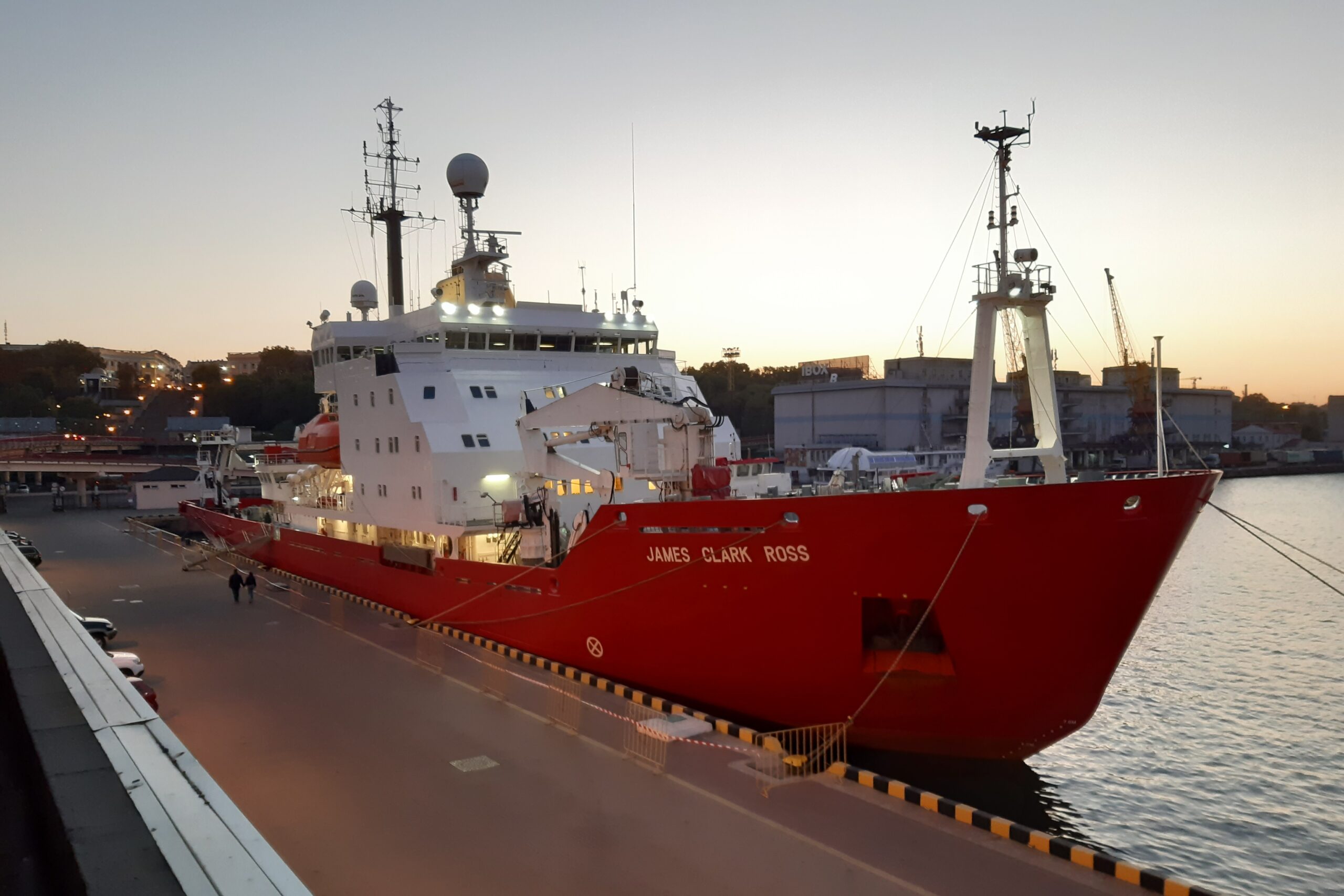
The first departure of the research icebreaker Noosfera to Antarctica under the Ukrainian flag is scheduled for next week, tentatively – January 20th-23rd.
The voyage could have started earlier, but was postponed. Formally, as reported by the press service of the National Antarctic Scientific Center of Ukraine (NASC), due to the fact that on New Year’s holidays there was a delay in the delivery of goods to the icebreaker for a new shift of polar explorers, who should go on the Noosfera to the Ukrainian Antarctic station Akademik Vernadsky.
But this explanation of the NASC is nothing more than an excuse. And confirmation of this is the tender announcement posted both on the website of the Antarctic Center and in the Prozorro public procurement system.
According to this announcement, NASC is ready to pay 6 million 258 thousand dollars of state budget funds for a certain “comprehensive service for the logistics of Ukrainian Antarctic expeditions.”
This annonce appeared on the evening of January 6th, when people had already begun to celebrate Christmas, or simply went about their business on the eve of a long weekend. Perhaps for the same reason, the tender announcement eluded the press. But it is worth paying close attention to.
To begin with, let’s go back to the recent past and remember why Ukraine, represented by the NASC, bought the Noosfera icebreaker. Recall that it previously belonged to the UK and was called James Clark Ross. The British asked for $10 million for the vessel, but then agreed to sell it at half price. As a result, $5 million was paid from the state budget, and the icebreaker was handed over to the NASC.
The main argument: expeditions to Antarctica had to be delivered on chartered foreign vessels, and this is expensive and logistically difficult. Allegedly, it is almost impossible to calculate the freight amount in advance (and find a way to reduce it). Ukraine has not had its own vessel for Antarctic expeditions for a long time.
“Bracket” for the charter of the vessel – from 20-25 thousand dollars for vessel/day to 55 thousand. And how many vessel/days will be required – no two years alike. It all depends on weather conditions, and on the time of loading products on board. And we pay,” said Evhen Dykyy, Head of the National Antarctic Scientific Center (NASC), back in 2019.
When the icebreaker was finally bought, it became necessary to deliver it to Ukraine. The icebreaker that had already become “ours” was in Denmark, and it was to move to a new home port – Odesa. This is where things get interesting.
A crew that could ferry the vessel to Odesa was needed. There are tens of thousands of sailors in Ukraine, and it seemed that there was no personnel issue at all. But for some reason (we will deal with this point separately) the NASC did not find qualified navigators and mechanics for this voyage.
The crew was to include 24 people. Even before the purchase of the icebreaker by Ukraine, they were hired by the British crewing company Seamariner. However, after the deal, it said that the experienced sailors of the James Clark Ross icebreaker were already working for two employers. Some went to the crew of the Sir David Attenborough icebreaker of the British Antarctic Survey, while the rest worked for Pech OU from Estonia. In this regard, the NASC reported that this particular Estonian company is the only one that can provide the vessel’s passage to Odesa. With her, a corresponding contract was concluded in the amount of 1.33 million dollars.
The icebreaker left Denmark on September 18th, and moored at the Odesa Sea Port on October 5th, 2021. In other words, the voyage lasted 18 days. Divide the indicated amount by the number of days and we understand that the transfer of the vessel cost the budget $73,888/day. Recall that earlier Evhen Dykyy called the maximum amount of a foreign vessel charter for the delivery of polar explorers to Antarctica – 55 thousand dollars/day. It means, Noosfera even at the initial stage began to cost Ukraine more. This is taking into account the fact that the voyage from Denmark took place under normal shipping conditions, and not in the difficult Antarctic region.
Estonian legacy
There is a question that so far seems to be rhetorical. How did it happen that some of the sailors from the British team were employed by an Estonian company?
Pech OU, which, according to Estonian registries, is engaged in “wholesale trade in intermediate products” (it should be understood that semi-finished products), has been registered in Tallinn since 2011, and is doing well in trade.
Authorized persons in this company are certain Vlolodymyr Tsvetsikh and Natalia Zynkevych. These names are associated with several other Estonian companies, both active and liquidated. But none of them, judging by official data, has anything to do with shipping, crewing or ship supply. But this fact does not bother the NASC, and the center pays a million dollars for the delivery of the icebreaker to Ukraine. The vessel, certainly, was delivered, but the choice of the contractor is more than strange.
Delivering a vessel to Odesa is not enough. There was a need to prepare her for a voyage to Antarctica. And the icebreaker was sent to the Illichivsk Shipyard for maintenance. It was not possible to find any mention of the contract concluded with the plant either on the NASC website or in the Prozorro system. But there is comprehensive information about the contract with the same trading company from Estonia. It was with it that the NASC agreed on the preparation of the Noosfera for a voyage to Antarctica. The issue price is another 1 million 60 thousand dollars. The relevant contract is here.
It also provides that the contractor will perform maintenance of the icebreaker at the docks of the Illichivsk Shipyard.
Part of the sum ($865,650) will be used to maintain the icebreaker and train the crew, and the rest will be used to equip the vessel with additional, including scientific, equipment. The contractor undertook to complete the first part of the contract by January 15th, 2022, and the second part – retrofitting – by March 10th, 2022. That is, after the Noosfera sets off on a voyage and, most likely, even reaches Antarctica, the path to which should take 5-6 weeks. How the equipment will be delivered there is not mentioned in the contract.
Now, as for the crew. “Under the British”, 24 people served on the icebreaker. On the already Ukrainian vessel, according to the above mentioned contract, 19 people will work during the voyage – officers and enlisted personnel. As for those very professionals from the Estonian trading company, according to the NASC, there are only five people: chief, third and fourth engineers, an electrician and a technical superintendent. It is they who must ensure the preparation of the vessel and all future crew for the upcoming voyage to Antarctica. Would there be such specialists in Ukraine without the participation of an Estonian company? Undoubtedly. But no one seemed to be looking for them at first.
By the way, the position of the fourth engineer is absent in the new staffing table, and the technical superintendent is a coastal position and does not apply to seafarers.
Thus, the delivery of the Noosfera from Denmark to Ukraine, the preparation of the crew and the vessel itself for the voyage to the Southern Ocean, as well as the retrofitting with equipment has already cost the budget (it means, all of us) 2.39 million dollars. But that’s not all.
On the first voyage
It is quite possible that the delay in the departure of the Noosfera to Antarctica is not due to a delay in the delivery of goods because of the New Year holidays. And with the fact that only on January 17th, NASC plans to sign an agreement with a contractor who will provide this very voyage. It would seem: there is a crew trained by professionals from an Estonian company, there is a vessel prepared for the voyage, which belongs to the NASC… Load it with food, bunker it, and let it set sail for distant snowy shores. But a contractor was needed, who is offered to be paid, as noted at the very beginning of the article, 6.258 million dollars. What exactly is this money being paid for, to whom and why? Now let’s figure it out.
So, let’s immediately denote: there is no one new in the scheme. The money will still be received by the Estonian company.
There was no alternative to the trading company from Tallinn again, and the NASC (probably thinking that “the plebs will lap it up”) explains this by the fact that it was the Estonian company that recruited the crew on the icebreaker from among those who sailed on it earlier as part of British expeditions, and also delivered the vessel from Denmark to Odesa. And the rest, ordinary employees, have no such experience. In this regard, it was Pech OU that was entrusted with organizing a voyage from Odesa to the Akademik Vernadsky station to Antarctica and back to Odesa.
It is assumed that the contract, which also provides for the supply of the vessel with everything necessary for the voyage, will be valid til June 30th, 2022, and the prepayment will be 90% of the mentioned amount of $6.258 million.
Non-random coincidence
Where did the Estonian firm for the sale of semi-finished products come from? And why such attachment to it from the National Antarctic Scientific Center?
Pech OU came to the attention of the NASC several years ago, when a tender for the delivery of another expedition to Antarctica was being carried out. Then four companies applied for it, the applications of two of them were rejected. These are Pech OU and the Ukrainian ООО “Interpromflot” (Limited Liability Company), which is part of the Interrybflot company, which fishes near Antarctica and produces canned food under the Akvamarin trademark.
There are many interesting things in the justification of the tender committee with the refusal of the Estonian and Ukrainian firms. In particular, Interpromflot offered to deliver polar explorers to Antarctica on the trawler More Sodruzhestva, which catches krill in the Southern Ocean. The trawler was no use, and the deadlines for the implementation of the contract seemed doubtful to the tender committee. And Pech OU stated that in 2015 it had a similar experience in delivering polar explorers, and received a contract (from whom it was not specified in the protocol) for 500 thousand dollars. However, she could only confirm the delivery of two polar explorers for 5 thousand dollars. In addition, the tender committee noted that the Estonian company, which is run by a citizen of Ukraine Natalia Zynkevych, is not specialized, and is engaged in wholesale trade. Then this fact greatly strained the representatives of the NASC. But this was still under the old management of the scientific center.

Two other participating firms were also with a dubious reputation, they did not conclude an agreement with them, and now we are not talking about them.
Director of the NASC Valery Litvinov at one time announced lobbying for the interests of Interpromflot by the headship of the Ministry of Education (the scientific center is subordinate to him), the intervention of the Security Service of Ukraine and representatives of the Narodny Front party.
Soon, Interpromflot managed to win the tender of the NASC, and it became the organizer of the delivery of the new, 22nd expedition of Ukrainian polar explorers to Antarctica. “But it turned out that more than half of the list of necessary goods were not purchased, and the expedition members were delivered on the passenger vessel Ushuaia (an Argentinean vessel; however, polar explorers were delivered on it before). It was offered in the tender by another company, but UAH 12 million (USD 415.9 thousand) cheaper. It was refused, needless to say. Interpromflot also used a subcontractor, which was not mentioned in the tender offer. In fact, Interpromflot independently purchased only air tickets for UAH 1.3 million (USD 45.06 thousand), and transferred 90% of the amount to the related company PECH OU (Estonia), which is confirmed by the audit of the State Audit Service of Ukraine. Already for the next expedition, the tender was fully registered for Interpromflot,” writes the website of People’s Deputy of Ukraine Oleksandr Dubinsky.
But this is not the only thread that links PECH OU, Interpromflot and Interrybflot.
What is the point
In 2017, the SSU investigated a criminal case on the smuggling of fish products from the occupied Crimea. And it concerned the company Interryfblot (til 2014 she did business in the Crimea) and various companies associated with it. Special service officers searched OOO “Timefish” (Limited Liability Company) and found documents and seals of a number of firms in the safe. Among them is the seal of… PECH OU and the trawler More Sodruzhestva.
“The Kyiv company Timefish is owned by Andrii Chuklinov from Donetsk, who headed the Department of Aquaculture, Use and Reproduction of Aquatic Biological Resources and International Cooperation of the State Fisheries Agency of Ukraine until 2017. The Director of Timefish is Lyudmila Zaitseva. She manages OOO “IRF-Flot” (Limited Liability Company), which is registered with OOO “Distributsiia-Tsentr” (Limited Liability Company). The founders of the latter are OOO “Interflot” (Limited Liability Company), OOO “More Sodruzhestva” (Limited Liability Company) and OOO “ZNVKIF” Trust Development” (Limited Liability Company), in whose interests ООО “KUA (Asset management company) Dneprovskiy investor” (Limited Liability Company) operates, and the ultimate beneficiaries are Petro Sviridov and Hryhorii Lutsai,” writes Nashi Hroshi.
Also, Petro Sviridov and Hryhorii Lutsai are the ultimate beneficiaries of OOO “Interrybflot” (Limited Liability Company), which produces canned food Akvamarin, for which the trawler More Sodruzhestva catches fish. This is the only Ukrainian vessel that has the right to catch Antarctic resources. We will try to separately study how these quotas were obtained.
Let’s return to the trawler and the icebreaker. With the appointment of Evhen Dykyy to the position of Director of the NASC in February 2018, Interpromflot began to receive contracts not only to support expeditions, but also to study krill stocks in the waters of Antarctica. That is, the company used state money to study the reserves of resources that it fishes for commercial purposes.
A poetic note about Evhen Dykyy: he is a biologist, but he had nothing to do with Antarctica. But for a short time he was an assistant to the People’s Deputy Andrii Levus, just from the Narodny Front party. By the way, in 2014, Levus was also Deputy Head of the SSU for several months. However, this could be pure coincidence, right?
But it is not a coincidence that Interpromflot received contracts from the NASC on a non-alternative basis precisely under Dykyy. The last time was a year ago. The company was supposed to organize an expedition to Antarctica and study krill stocks again. And again with the help of its trawler More Sodruzhestva, but for public money.

In autumn, Ukraine got its own icebreaker. Well, not actually its own. For public money, it is operated by a structure associated with those who earn money in Antarctica. And it is clearly no coincidence that PECH OU, on the eve of the transfer of the icebreaker to Ukraine, signed a contract with a part of the sailors from this vessel, and subsequently received a non-alternative contract for its maintenance. Considering that the Noosfera is not just an icebreaker, but a research vessel, it can also be used to study fish stocks. And this is convenient – on one vessel you catch fish and earn money, on the second – you study its reserves and plan fishing in the future. And you earn again, but at the expense of the state. It means, all of us. Now it becomes clear to whom and why an icebreaker was needed. But I really wanted to believe that this is really for science, for the first time in Ukraine, without any catch.
Instead of a postscript. From the speech of the President of Ukraine Volodymyr Zelenskyy at the Congress of Local and Regional Authorities (Odesa, October 29th, 2021):
– We are handing over the icebreaker James Clark Ross to the scientists of our Antarctic station Akademik Vernadsky. As long as it has a name. But the main thing is that it was acquired by the state. This is the first time. I do not consider this a feat, but the news is really good. Ukraine is a member of the prestigious world clubs of space and antarctic states. And today Ukraine is returning – or starting to return – to the oceans.
Lilia Pisarchuk
